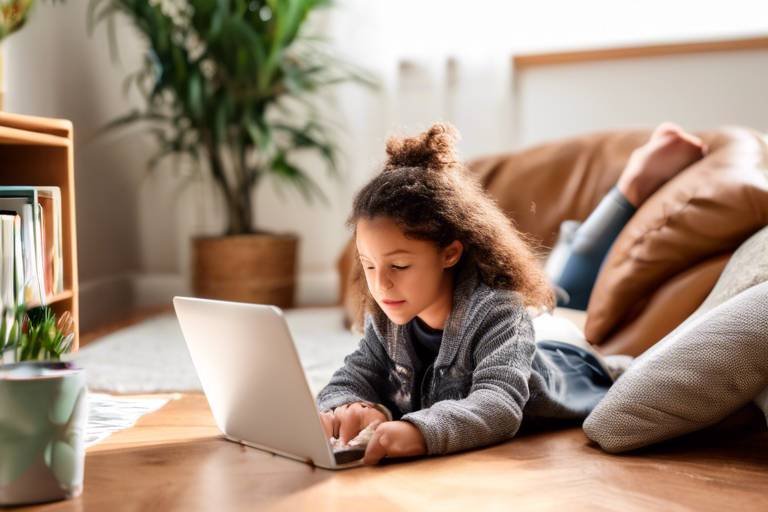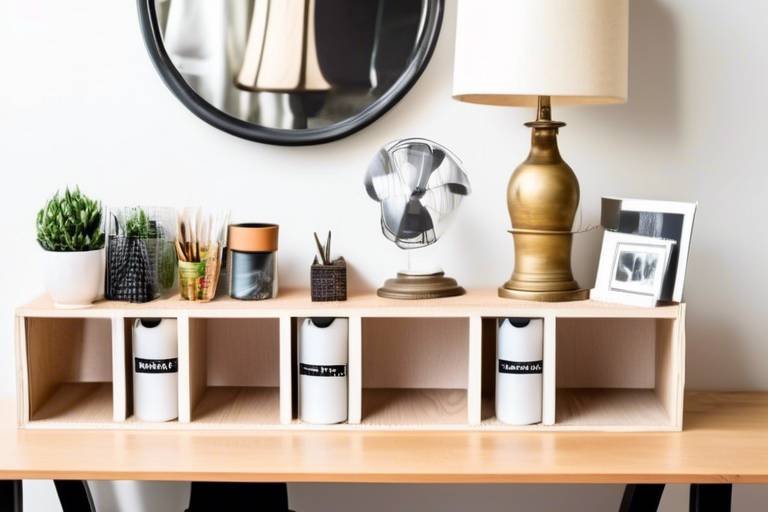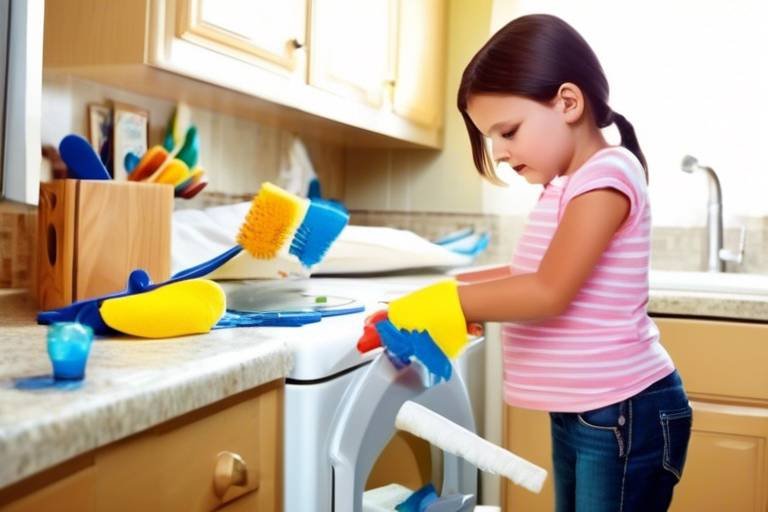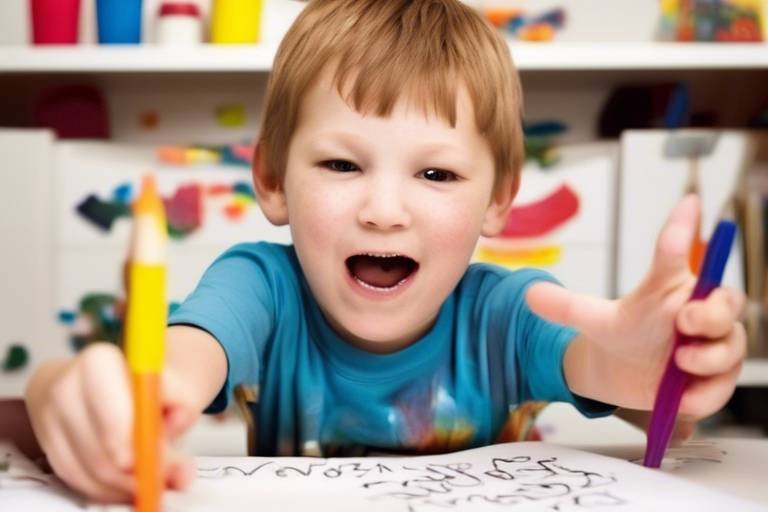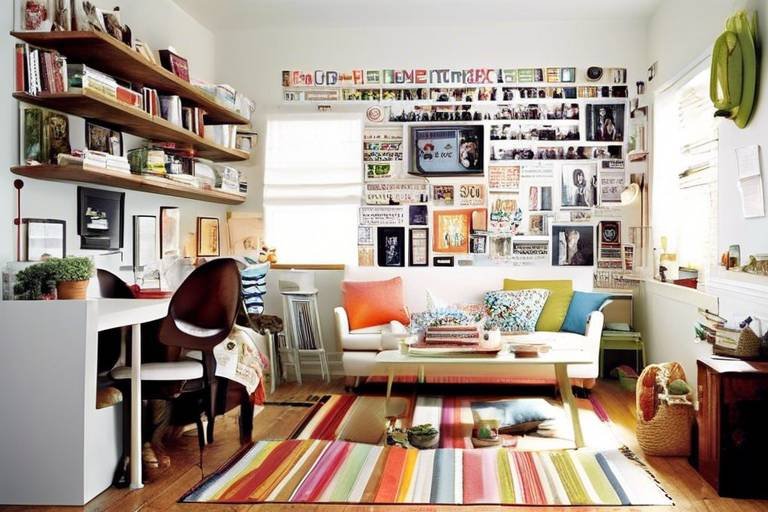Teaching Kids to Be Tidy: A Step-by-Step Guide
In a world that's constantly buzzing with activity, teaching kids to be tidy can feel like an uphill battle. But fear not! This article provides practical strategies and insights for parents to instill tidiness in their children. Discover effective methods to encourage organization and cleanliness in a fun and engaging way. Imagine walking into a room where toys are neatly put away, clothes are folded, and everything has its place. Sounds dreamy, right? Well, it’s possible! With the right approach, you can transform tidiness from a chore into a delightful habit that your kids will carry into adulthood.
Why is teaching kids to be tidy so crucial? Tidiness isn't just about having a clean space; it’s a foundational skill that can impact various aspects of a child's life. For starters, a tidy environment can significantly improve focus. When everything is in its place, distractions are minimized, allowing children to concentrate better on their tasks. Furthermore, instilling a sense of organization fosters responsibility. Children learn to take care of their belongings, which translates into other areas of their lives. It also boosts self-esteem; when kids see their clean spaces, they feel a sense of accomplishment. These benefits create a ripple effect, motivating parents to implement tidiness practices effectively.
Have you ever noticed how kids are like little sponges, soaking up everything around them? Children often mimic their parents' behavior, so if you want your child to be tidy, it starts with you! By maintaining a tidy environment and demonstrating organization skills, parents can inspire their kids to adopt similar habits. Think of it this way: if they see Mom or Dad putting things back in their place, they’ll naturally want to do the same. It’s about creating a culture of cleanliness in your home where everyone pitches in. So, roll up your sleeves and get involved—your actions speak louder than words!
Imagine stepping into a clutter-free space where everything is organized and easy to find. A tidy environment encourages children to keep things organized. But how do you create such a space? Start by decluttering! Go through play areas, bedrooms, and common spaces, and involve your kids in the process. Ask them to decide which toys they love and which ones they can donate. Not only does this teach them about generosity, but it also helps them understand the importance of keeping only what they truly value. Once you've decluttered, consider implementing storage solutions like bins, shelves, and labels to make organization a breeze. A well-organized space is like a blank canvas, inviting creativity and play!
Routines are the backbone of any successful habit, and tidiness is no exception. Regular routines can help children develop the habit of tidiness. Discussing the importance of daily chores and setting specific times for cleaning can make tidying up a regular part of their lives. For instance, you might establish a "10-minute tidy-up" rule before dinner or bedtime. This not only makes cleaning manageable but also instills a sense of discipline. Plus, when kids know what to expect, they’re more likely to participate willingly. Remember, consistency is key—over time, these routines will become second nature!
Who says cleaning has to be boring? Engaging children in tidying activities can make the process enjoyable. Incorporate games, music, and rewards to motivate kids to participate willingly in keeping their spaces clean and organized. For example, you could turn tidying into a race—set a timer and see how quickly they can pick up their toys. Or, create a cleaning playlist with their favorite songs to make the task feel like a dance party! You can even introduce a reward system where they earn points for every tidy-up session that can be exchanged for fun activities. The goal is to transform tidying from a chore into a fun and rewarding experience!
Providing children with organizational tools and strategies can empower them to manage their belongings effectively. Simple techniques like labeling, sorting, and using storage solutions can enhance their tidiness skills. For instance, you can create labeled bins for different types of toys or clothes, making it easy for kids to know where things belong. Teach them to sort their items by category—like books, games, and art supplies. This not only helps them stay organized but also encourages them to think critically about their belongings. The more skills they acquire, the more independent they will become in maintaining their tidy spaces!
Instilling a sense of responsibility in children regarding their belongings fosters independence. Discussing the importance of taking care of their items helps them understand the value of tidiness. You might say, “When you take care of your toys, they last longer, and you can enjoy them more!” This simple shift in perspective can make a world of difference. Encourage them to take ownership of their space—remind them that a tidy room is a reflection of their efforts. When kids feel responsible for their belongings, they’re more likely to take pride in keeping things organized.
Recognizing and celebrating children’s efforts in maintaining tidiness can reinforce positive behavior. Acknowledgment can motivate them to continue practicing good habits and take pride in their organized spaces. Whether it’s a simple high-five, a sticker chart, or a special treat for a job well done, celebrating achievements makes tidiness feel rewarding. This positive reinforcement encourages them to keep up the good work and builds their confidence. Remember, every little step counts—so make sure to highlight their successes!
- How can I motivate my child to clean their room? Try turning cleaning into a game or setting a timer for a fun race!
- What age should I start teaching my child to be tidy? You can start as early as preschool age; children can understand basic tidying tasks by then.
- Are there specific chores suitable for younger children? Yes! Simple tasks like putting away toys or sorting laundry are great for younger kids.
- How do I handle resistance to tidying? Stay patient and consistent. Offer praise when they do tidy up, and try to make it a fun activity.
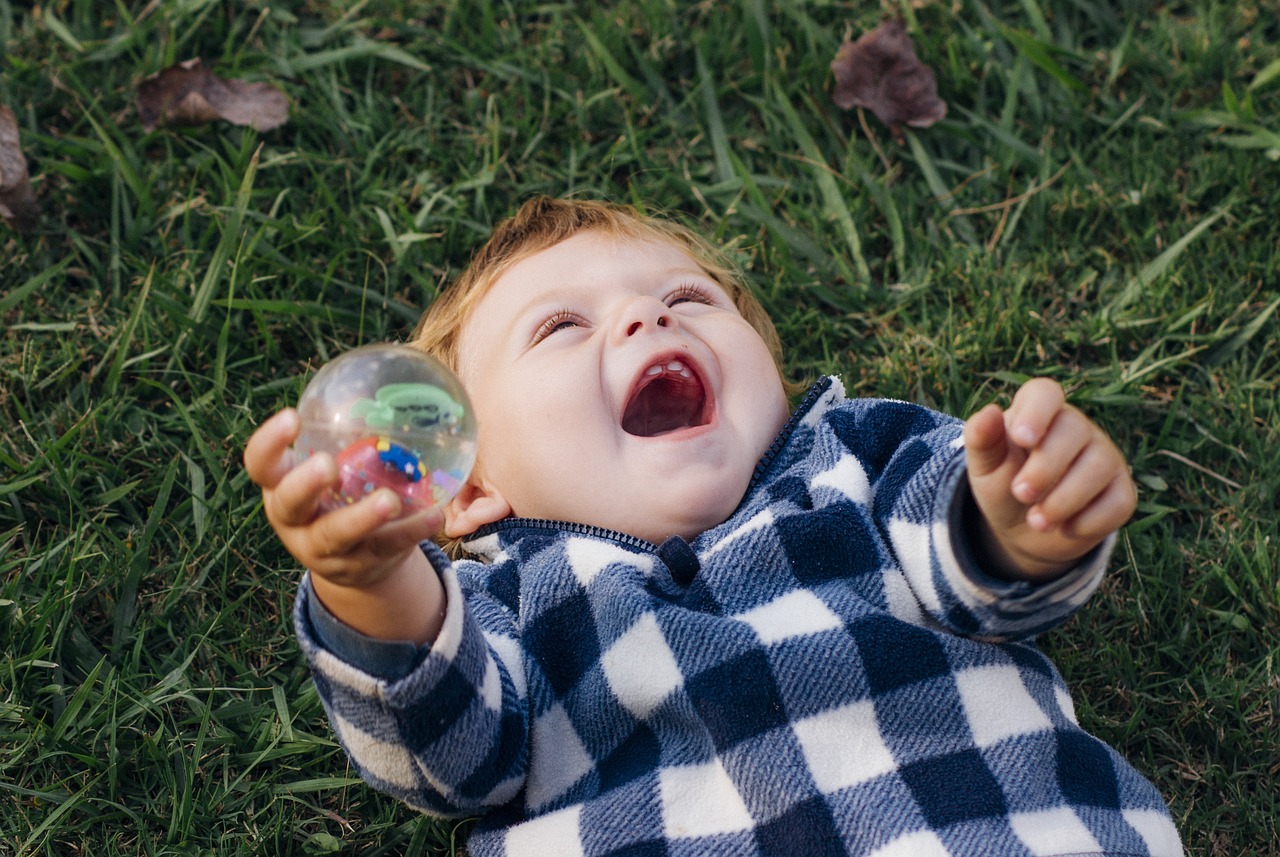
Understanding the Importance of Tidiness
Teaching kids to be tidy is not just about having a clean room; it’s about laying the foundation for a lifetime of skills that will serve them well in various aspects of their lives. When children learn to keep their spaces organized, they develop focus and responsibility, which are crucial for their academic and personal growth. Imagine a child sitting down to do homework in a cluttered space—it's like trying to read a book in a noisy café! The distractions can lead to frustration and hinder their ability to concentrate. On the flip side, a tidy environment can enhance their focus, allowing them to absorb information more effectively.
Moreover, instilling tidiness in children boosts their self-esteem. When kids take pride in their organized spaces, they feel a sense of accomplishment. It’s like winning a small victory every time they put their toys away or make their beds. This sense of achievement can translate into other areas of their lives, encouraging them to tackle challenges with a positive attitude. It’s essential for parents to recognize that these habits, once formed, can lead to lifelong benefits.
In addition to focus and self-esteem, teaching tidiness fosters a sense of independence. As children learn to manage their belongings, they also learn to take ownership of their responsibilities. This independence is vital as they grow older and face more complex tasks, whether it’s managing school assignments or eventually living on their own. The earlier they start, the more equipped they will be to handle life's challenges.
To illustrate the advantages of tidiness, consider the following benefits:
- Improved Focus: A clean space minimizes distractions, allowing for better concentration.
- Enhanced Responsibility: Kids learn to take care of their belongings, fostering independence.
- Boosted Self-Esteem: Achieving tidiness can lead to feelings of accomplishment.
Ultimately, understanding the importance of tidiness sets the stage for parents to implement effective strategies in their homes. By fostering an environment where cleanliness is valued, parents not only contribute to their child’s development but also create a harmonious living space for the entire family. So, let’s dive into how you can make tidiness a fun and engaging part of your child’s daily routine!

Setting a Good Example
When it comes to teaching kids about tidiness, one of the most powerful tools in a parent's arsenal is leading by example. Children are like little sponges, soaking up everything they see and hear. If they observe their parents maintaining a clean and organized environment, they are more likely to adopt those same habits. Think of it as planting seeds in a garden; if you nurture the soil with good practices, beautiful flowers will bloom. But what does setting a good example really look like in day-to-day life?
First and foremost, it’s essential to create a tidy environment at home. This doesn’t mean you need to have a perfectly spotless house at all times—after all, life happens! However, regularly decluttering and organizing shared spaces can show kids that tidiness is a priority. When they see you putting things back in their designated spots, they learn that this is a normal part of life. You might even make a game out of it—turn on some music and have a family cleanup session. This not only keeps the space tidy but also reinforces the idea that tidiness can be fun!
Moreover, verbal reinforcement is just as important as physical action. Talk to your kids about why you value tidiness. Explain how a clean space can lead to better focus and less stress. You might say something like, “Look how much easier it is to find our toys when everything has its place!” This kind of dialogue helps children understand the reasoning behind the behavior, making them more likely to internalize these lessons. Remember, kids are naturally curious, so inviting them into the conversation can spark their interest and encourage them to ask questions.
Another effective strategy is to involve your children in your organizational efforts. When they help you sort through toys or clean up a room, they gain hands-on experience and a sense of ownership over their environment. You might say, “Let’s see how many of these toys we can donate to help other kids!” This not only teaches them about tidiness but also about generosity and empathy. It’s a win-win situation!
In addition to these strategies, consistency is key. If you establish a routine where tidying up is a regular activity, your children will come to expect it as part of their daily lives. This can be as simple as a quick tidy-up before dinner or a more involved cleaning day on weekends. The more they see tidiness as a normal part of life, the more likely they are to embrace it themselves.
Lastly, don’t forget to celebrate the little victories. When your child takes the initiative to clean up their room or help with household chores, acknowledge their efforts. A simple, “I’m so proud of you for keeping your space tidy!” can go a long way in reinforcing positive behavior. This not only boosts their self-esteem but also makes them more likely to continue practicing good habits in the future.
In conclusion, setting a good example is about more than just keeping a clean house; it's about creating an environment where tidiness is valued and practiced. By demonstrating these habits, engaging in conversations about their importance, and celebrating your child's efforts, you're not just teaching them to be tidy—you're equipping them with valuable life skills that will benefit them for years to come.
- What age should I start teaching my child about tidiness?
It's best to start as early as possible. Even toddlers can learn simple tasks like putting toys away. - How can I make cleaning fun for my kids?
Incorporate games, set timers for quick clean-ups, or play their favorite music while tidying up. - What if my child resists tidying up?
Try to understand their perspective, involve them in the process, and make it a collaborative effort instead of a chore. - How do I handle clutter in shared spaces?
Establish zones or designated areas for each family member's belongings to minimize clutter.

Creating a Tidy Environment
Creating a tidy environment is like laying the foundation for a beautiful house; without it, everything feels chaotic and uninviting. When children are surrounded by clutter, it can be overwhelming, making it difficult for them to focus on tasks or even enjoy their playtime. Imagine trying to read a book in a room filled with toys scattered everywhere—it's nearly impossible! So, how do we transform our spaces into havens of organization? Let’s dive into some practical strategies that can help.
First and foremost, decluttering is essential. Take a moment to evaluate the spaces your children use most often, such as their play areas, bedrooms, and common spaces. Start by sorting items into categories: keep, donate, and discard. This can be a fun activity if you involve your kids in the process. Explain to them why it’s important to let go of things they no longer use or need. Not only does this create space, but it also teaches them valuable lessons about making choices and responsibility.
Once you’ve decluttered, it’s time to organize. Use storage solutions that are not only functional but also visually appealing. Clear bins, colorful baskets, and labeled containers can make organizing feel like a game rather than a chore. For instance, you could have a “Toy Bin” for action figures, a “Book Box” for their favorite reads, and a “Craft Corner” for art supplies. When everything has a designated spot, it becomes much easier for kids to put things away after they’re done using them.
Creating a tidy environment also means establishing zones for different activities. Designate specific areas for homework, play, and relaxation. This not only helps in keeping things organized but also teaches kids to associate certain spaces with specific activities. For example, a quiet corner with a desk can be a perfect spot for homework, while a cozy nook with cushions can be their reading retreat. By clearly defining these spaces, children learn to respect their environment and understand the importance of keeping each area tidy.
Furthermore, don't underestimate the power of routine. Incorporating tidying up into your daily schedule can make it feel like a normal part of life rather than a dreaded task. Perhaps you could implement a “10-Minute Tidy-Up” session before dinner or bedtime. Setting a timer can turn this into a fun challenge, where kids race against the clock to see how much they can tidy up. This not only makes cleaning feel less burdensome but also instills a sense of accomplishment when they see the results of their efforts.
Lastly, remember to celebrate the small victories. After a successful decluttering session or a tidy-up challenge, take a moment to acknowledge your child's hard work. Whether it’s a simple high-five, a sticker chart, or a special treat, recognizing their efforts reinforces positive behavior and motivates them to keep their spaces organized. A tidy environment is not just about cleanliness; it’s about creating a space where kids can thrive and feel proud of their surroundings.
Q: How can I motivate my child to keep their space tidy?
A: Make tidying up a fun activity by incorporating games, challenges, or music. Recognizing their efforts and celebrating small achievements can also help motivate them.
Q: What are some effective storage solutions for kids' toys?
A: Consider using clear bins, labeled boxes, or colorful baskets. These not only help keep things organized but also make it easy for kids to find and put away their toys.
Q: How often should we declutter?
A: It’s a good idea to declutter every few months. However, you can also do mini-decluttering sessions regularly to keep things manageable and prevent clutter from piling up.
Q: At what age can children start learning to tidy up?
A: Children as young as 2 or 3 can begin learning to tidy up with simple tasks like putting toys away. As they grow older, you can gradually introduce more responsibilities.

Establishing Routines
Establishing routines is like laying down the tracks for a train; it guides children on a smooth journey towards tidiness. Routines provide a framework that helps kids know what to expect and when to do it. Imagine waking up each day not knowing whether it’s time to brush your teeth or eat breakfast. It would be chaotic, right? Similarly, children thrive when they have a structured environment. By incorporating tidying up into their daily routines, you’re not just teaching them to clean; you’re instilling a sense of responsibility and independence.
To start, it’s essential to discuss with your children why routines matter. You might say, “When we follow a routine, we can spend more time playing and having fun!” This approach not only makes the concept of routines more appealing but also helps them understand the benefits of being organized. You can create a simple daily schedule that includes specific times for tidying up. For instance, you can designate a time right after school for a quick tidy-up session, or set aside a few minutes before bedtime for them to organize their toys and clothes. This way, tidying becomes a normal part of their day, much like brushing their teeth or having dinner.
Additionally, consider using visual aids such as charts or checklists to help children track their progress. A colorful chore chart can make tidying up feel like a fun game rather than a chore. You can even add stickers or stars for each completed task, providing a visual representation of their accomplishments. This not only motivates them but also reinforces the idea that tidiness is an ongoing process that requires consistent effort.
Another effective strategy is to incorporate tidying into existing routines. For example, you can tie tidying up to storytime. After reading a book, encourage your child to put their toys away before diving into the next adventure. This creates a seamless transition between activities and reinforces the importance of maintaining a tidy space. Remember, children learn best through repetition and association, so the more you can connect tidying to fun activities, the more likely they are to embrace it.
In summary, establishing routines for tidiness is crucial for children’s development. It helps them build essential life skills, fosters a sense of responsibility, and creates a more organized home. By making tidying a regular part of their daily lives and using engaging methods like charts and associations, you’re setting them up for success. Just like a well-oiled machine, a well-structured routine can lead to a cleaner, more harmonious household.
- How can I make tidying part of my child's daily routine? Start by setting specific times for cleaning, such as after school or before bedtime, and use visual aids like chore charts to track progress.
- What if my child resists tidying up? Make it fun by incorporating games, music, or rewards to motivate them. Explain the benefits of tidiness in a way they can understand.
- How can I teach my child to be responsible for their belongings? Encourage them to take ownership of their items by discussing the importance of caring for their things and setting clear expectations.
- Is it okay to help my child with tidying up? Yes, especially when they are young. However, gradually encourage them to take the lead as they become more comfortable with the process.

Making Tidying Fun
Let’s face it—getting kids to tidy up can sometimes feel like trying to get a cat to take a bath. It’s not easy, and it often leads to a lot of resistance and whining. But what if we could flip the script and turn tidying into a fun adventure? Yes, it’s possible! By incorporating games, music, and a sprinkle of creativity, you can transform tidying from a dreaded chore into an enjoyable activity that kids actually look forward to.
First off, let’s talk about games. Kids love to play, so why not make tidying a game? You could set a timer and challenge them to see how many toys they can put away before the timer goes off. This not only makes cleaning feel like a race against time but also adds an element of excitement. You can even create a point system where they earn points for every item they put away, and at the end of the week, they can trade those points for a fun reward. It’s like a mini-competition right in your living room!
Music is another fantastic way to make tidying up more enjoyable. Create a playlist of their favorite upbeat songs and have a dance party while cleaning. You can even create a “tidy-up” song that signals it’s time to clean. The rhythm and energy of music can turn a mundane task into a lively celebration. Imagine your kids dancing around, singing, and cleaning at the same time—now that’s a sight to behold!
Another fun idea is to incorporate themed tidying days. For example, you could have a “Superhero Clean-Up Day” where everyone dresses up as their favorite superhero and tackles the mess together. Or a “Pirate Treasure Hunt” where they have to find and put away items that are out of place, pretending they are searching for hidden treasure. This not only makes cleaning more fun but also encourages teamwork and creativity.
To keep things fresh and exciting, consider rotating the cleaning activities. One day, it might be organizing books, and the next, it could be sorting out toys. You can even create a chart that showcases the different tasks and allow your kids to pick what they want to do each day. This way, they feel a sense of ownership and control over their tidiness, making them more likely to participate willingly.
Lastly, don’t forget to celebrate their efforts! After a successful tidying session, take a moment to acknowledge their hard work. Whether it’s a simple high-five, a sticker chart, or a special treat, celebrating their achievements reinforces positive behavior and encourages them to keep up the good work. Remember, the goal is to create a positive association with tidying, and a little celebration can go a long way!
Incorporating fun and creativity into tidying not only helps children develop good habits but also strengthens family bonds. So, the next time your kids groan at the thought of cleaning up, just remember: with a little imagination and some playful tactics, tidying can be transformed from a chore into a delightful experience!
- How can I encourage my child to clean up without forcing them?
Start by making tidying a fun activity with games and music. Allow them to choose tasks and reward their efforts to create a positive experience. - What if my child resists cleaning altogether?
Try to engage them with themed cleaning days or challenges. Sometimes, a change in approach can spark their interest. - Are there specific age-appropriate tasks I can assign?
Yes! Younger kids can help with sorting toys, while older kids can tackle more complex tasks like organizing their rooms or helping with laundry.

Teaching Organizational Skills
Teaching kids organizational skills is like giving them a treasure map for life. Imagine setting them up with tools that not only help them manage their belongings but also empower them to navigate the complexities of daily tasks. When children learn how to organize, they're not just tidying up their rooms; they're building a foundation for responsibility and independence that will serve them well into adulthood. But how do we, as parents, effectively pass on these essential skills?
First and foremost, it’s important to introduce organizational tools that are age-appropriate and engaging. For younger children, colorful bins and baskets can make a world of difference. When they see their favorite toys nestled in vibrant containers, they are more likely to want to keep things tidy. For older kids, consider incorporating labeling systems or even a simple checklist to help them keep track of their tasks and belongings. A well-organized space can spark joy and creativity, turning tidiness into a fun challenge rather than a chore.
One effective strategy is to create a visual organization system. This could involve using charts or diagrams that outline where things belong. For instance, you could create a chart for their bedroom that shows where each toy, book, or article of clothing should be stored. This not only provides a clear guideline but also helps children learn to categorize and sort their items. By making these systems visually appealing, you're more likely to capture their interest and encourage them to participate in the organization process.
Let’s not forget about the power of routine. Establishing a consistent cleaning schedule can help children understand that tidiness is a regular part of their lives. For example, you could designate a specific time each day for tidying up. This could be right before dinner or after homework. When children know what to expect, they are less likely to resist the idea of cleaning up. You might even turn it into a family event, where everyone pitches in to tidy up together, making it a bonding experience.
Moreover, teaching kids to set goals can be incredibly motivating. Encourage them to take ownership of their space by setting small, achievable targets. For instance, they could aim to keep their desk organized for a week or to put away their toys every night before bed. Celebrating these small victories can be a powerful motivator. When they achieve their goals, take a moment to acknowledge their efforts and discuss how great it feels to have a tidy space.
Lastly, remember that patience is key. Just like any skill, organizational abilities take time to develop. There will be moments of frustration, and that’s perfectly normal. Encourage your children to see mistakes as learning opportunities. If they forget where something goes, gently remind them and guide them back to the organizational systems you’ve established together. Over time, these lessons will stick, and they will begin to internalize the importance of keeping their spaces tidy.
In conclusion, teaching organizational skills is not just about cleanliness; it's about instilling a sense of responsibility and independence in children. By providing them with the right tools, creating engaging systems, and fostering a supportive environment, you can help them develop skills that will benefit them throughout their lives. Remember, the journey to tidiness is a shared adventure, and with your guidance, your children will thrive!
- What age should I start teaching my child organizational skills? It's never too early! You can start introducing basic concepts as soon as they begin to understand the idea of putting things away.
- How can I make tidying up more fun for my child? Try incorporating games, music, or timed challenges to make the process enjoyable. You could even turn it into a friendly competition!
- What if my child resists cleaning up? Encourage them by highlighting the benefits of a tidy space and involve them in creating their own organizational systems. Patience and positive reinforcement are key!

Encouraging Responsibility
When it comes to teaching kids about tidiness, one of the most powerful lessons you can impart is the importance of responsibility for their belongings. Think of it this way: just like a gardener nurtures their plants, kids need to learn how to care for their "garden" of toys, clothes, and personal items. This sense of ownership not only helps them keep their spaces tidy but also promotes a deeper understanding of the value of their possessions.
To encourage responsibility, start by having open conversations with your children about why it’s important to take care of their things. Ask them questions like, “How would you feel if you lost your favorite toy?” or “What happens when we don’t put our things away?” These discussions can help them connect emotionally with the concept of responsibility. You can also create a responsibility chart that outlines their tasks, making it visually clear what they need to do. This chart can include simple tasks such as:
| Task | Frequency | Completion Check |
|---|---|---|
| Put away toys | Daily | ✔ |
| Make the bed | Daily | ✔ |
| Sort laundry | Weekly | ✔ |
Moreover, let’s not forget the power of natural consequences. If your child leaves their bike out in the rain and it gets rusty, that’s a perfect opportunity to discuss the importance of taking care of their belongings. It’s all about balancing guidance with letting them experience the outcomes of their actions. When they see the direct effects of neglecting their responsibilities, it can be a real eye-opener.
Another effective strategy is to involve them in the process of organizing their belongings. Have them decide where their toys should go and why. This not only gives them a sense of control but also instills a notion of accountability. When children feel like they have a say in how their space is managed, they are more likely to take pride in keeping it tidy.
Finally, celebrate their efforts! When your child successfully takes responsibility for their things, whether it’s by keeping their room clean or helping with chores, acknowledge their hard work. A simple “I’m proud of you for keeping your room tidy today!” can go a long way. This positive reinforcement encourages them to continue developing these essential habits.
- How can I motivate my child to be more responsible? Start by setting clear expectations and providing positive reinforcement when they meet those expectations.
- What if my child resists tidying up? Make it a fun activity by turning it into a game or challenge, and consider involving their friends for added motivation.
- At what age should I start teaching my child about responsibility? You can start as early as preschool age, gradually increasing the complexity of tasks as they grow older.

Celebrating Achievements
Celebrating achievements, no matter how small, is a powerful way to reinforce positive behavior in children. When kids take the initiative to keep their spaces tidy, it’s essential to recognize their efforts. This not only boosts their self-esteem but also motivates them to continue practicing good habits. Imagine a garden where every flower is nurtured and praised; similarly, children thrive on appreciation and acknowledgment.
One effective way to celebrate tidiness is through verbal praise. A simple “Wow, you did a fantastic job cleaning your room!” can light up a child’s face. This kind of recognition makes them feel valued and encourages them to maintain that level of effort. Additionally, consider creating a small rewards system. For instance, you might introduce a sticker chart where children earn stickers for each tidying task they complete. Once they reach a certain number of stickers, they could receive a special treat or a fun outing. This not only makes tidying up more engaging but also instills a sense of achievement.
Another fun way to celebrate is by hosting a “tidy party.” Invite family members to join in and recognize the hard work everyone has put into maintaining a clean home. This could be a simple gathering where everyone shares their tidying stories and the benefits they’ve experienced. It’s a great way to build a sense of community and teamwork within the family. Plus, it reinforces the idea that tidiness is a shared responsibility.
Incorporating creative elements into your celebrations can also be beneficial. For example, you could create a “Tidy Wall of Fame” where you display photos of your child’s organized spaces. This visual representation of their hard work serves as a constant reminder of their achievements. You might also consider writing little notes of appreciation and placing them in their lunchboxes or on their pillows. These small gestures can have a lasting impact.
Ultimately, the goal is to make tidiness a positive experience. When children see that their efforts lead to recognition and celebration, they are more likely to embrace tidiness as a valuable life skill. This not only helps them in their childhood but also sets the foundation for responsibility and organization in adulthood. Remember, every time you celebrate their achievements, you’re not just applauding their tidiness; you’re building their confidence and self-worth.
- Why is it important to celebrate children's achievements in tidiness?
Celebrating achievements boosts children's self-esteem and motivates them to maintain good habits. - How can I effectively reward my child for tidiness?
Consider using a sticker chart or small rewards that align with their interests, such as extra playtime or a favorite snack. - What are some creative ways to celebrate tidiness?
Create a “Tidy Wall of Fame” or write appreciation notes to make the recognition special and memorable.
Frequently Asked Questions
- Why is teaching my child to be tidy important?
Teaching kids to be tidy is crucial because it helps them develop essential life skills such as responsibility, organization, and focus. A tidy environment can also boost their self-esteem and create a more peaceful living space for everyone.
- How can I set a good example for my children?
Children are natural mimics, so by maintaining a tidy home and demonstrating organization in your daily life, you can inspire them to follow suit. Show them how you organize your space and involve them in tidying up together.
- What are some effective ways to create a tidy environment?
Start by decluttering and organizing play areas, bedrooms, and common spaces. Use storage bins, shelves, and labels to create designated places for items, which makes it easier for kids to keep things organized.
- How can I establish routines for tidying up?
Incorporate tidying into daily routines by setting specific times for cleaning up after play or before bedtime. Consistency is key, so make it a regular part of their day until it becomes a habit.
- What are some fun ways to make tidying enjoyable?
Turn tidying into a game! Use music, set a timer for a cleaning challenge, or offer small rewards for completed tasks. Making it fun can motivate kids to participate willingly.
- How can I teach my kids organizational skills?
Provide tools like bins, labels, and sorting trays to help them manage their belongings. Teach them simple techniques such as sorting items by category or color, which can enhance their organizational skills.
- How can I encourage my child to take responsibility for their belongings?
Discuss the importance of taking care of their items and the benefits of being responsible. Encourage them to clean up after themselves and to understand that tidiness reflects their personal responsibility.
- Why is it important to celebrate my child's tidying efforts?
Celebrating their achievements reinforces positive behavior and motivates them to continue practicing good habits. Acknowledgment can make them feel proud of their organized spaces and encourage them to maintain tidiness.



